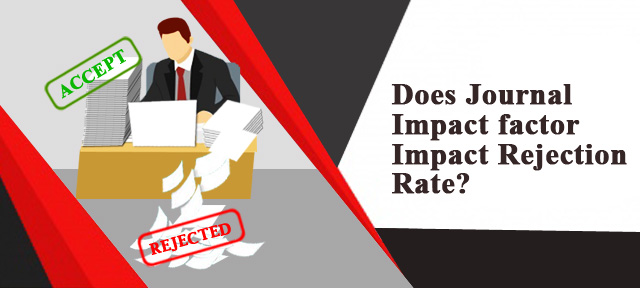Any author, be it a young emerging scholar or an established academician, wants to publish their articles in journals with a high impact factor. The impact factor is the metric by which most journals are measured and many authors chase such journals for their publications. However, at the same time, manuscript rejection is a harsh reality of life that all academicians have to live with and account for while looking for a publication.

There is a general perception, especially amongst young academicians, that high impact factor journals are highly selective about their publication. It is then conjectured that such journals give preference to established or reputed authors and therefore have a higher rejection rate, especially for young scholars.
This idea has been studied by some scholars. The most important study in this regard was the one done by Frontier. In this study, a random sample of 570 journals was taken to study their impact factor and rejection rates. The Frontier study debunks the argument of the impact factor and manuscript rejection rates. The study suggests that journal rejection rates are almost independent of its impact factor.
The Frontier study is not without its criticisms. Many have argued that the study grossly generalizes the data, that it fails to make a distinction between journals related to specific subjects or even the language of the journal. Some critics also argue that the study does show journals with a high impact factor to have very high rejection rates even if they are not co-related.
One needs to understand the Frontier study in its totality. High Impact journals as the more sought-after journals have a higher number of submissions and therefore it is not surprising if many authors get rejected as the journals may not be able to accommodate as many publications. However, the study also shows there are many journals with impact factors between 5 and 10 with extremely low rejection rates. At the same time, there are journals with low impact factors but much higher rejection rates. Therefore, it is not the impact factor that determines rejections.
Factors of rejection really depend on the best-fit criteria. Every journal has a specific field or discipline of study as its focus area and a very specific readership in its target. A journal will reject a manuscript if it does not match its criteria, irrespective of the journal’s impact factor or the author’s previous track record of publication.
The impact factor in the academic world has wrongfully become significant as researchers and even institutional committee members often make critical decisions related to promotions, awards, and funding based on publications in such journals simply because it is seen as a metric of higher citation. However, the Impact factor metric originated in the subscription-based era of publishing and was originally designed to help librarians select journals worth purchasing. It neither reflects the actual number of citations for a given article or a particular author, nor its academic quality. One can still have good publications with decent citations in journals without a high impact factor.

